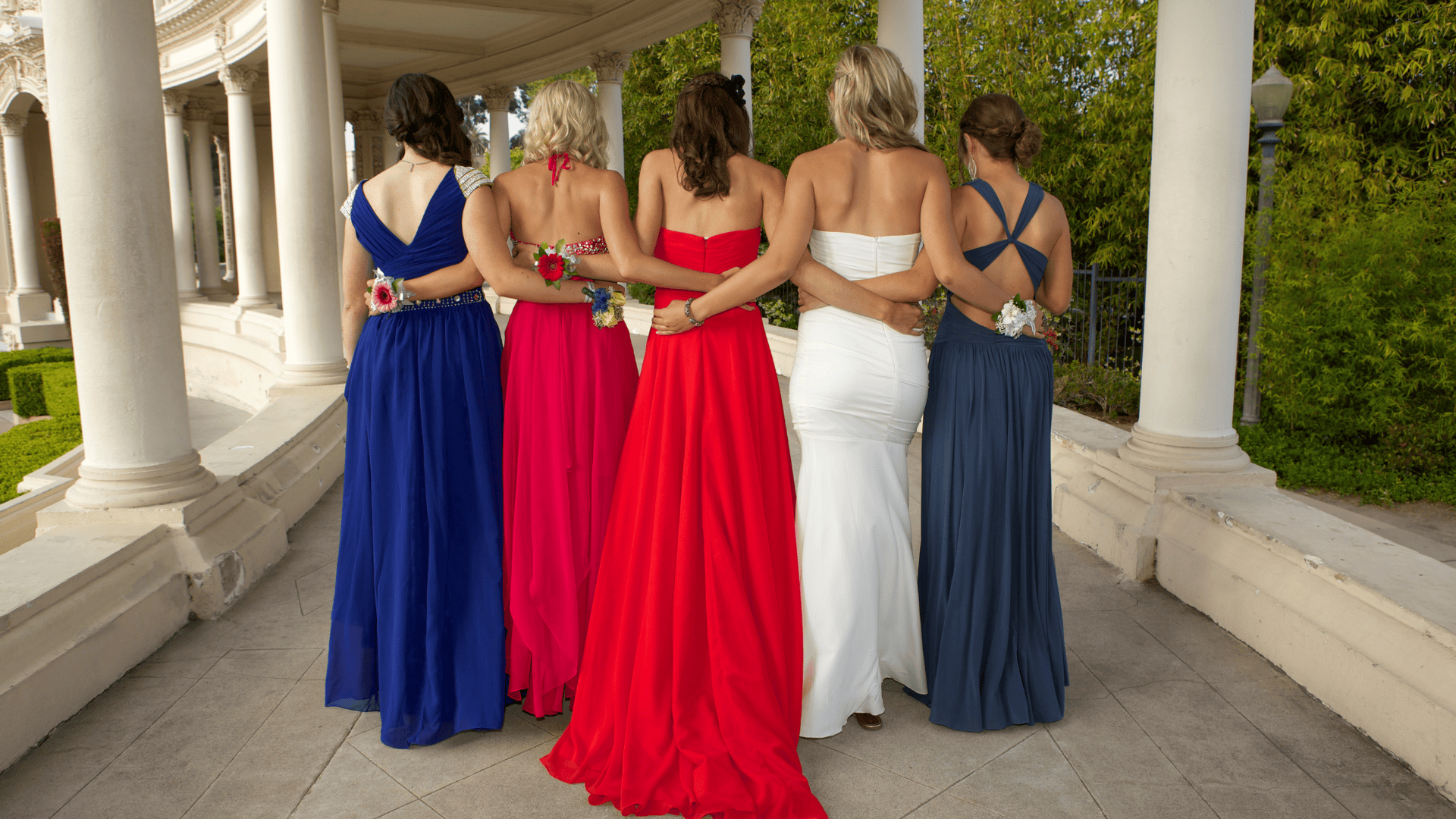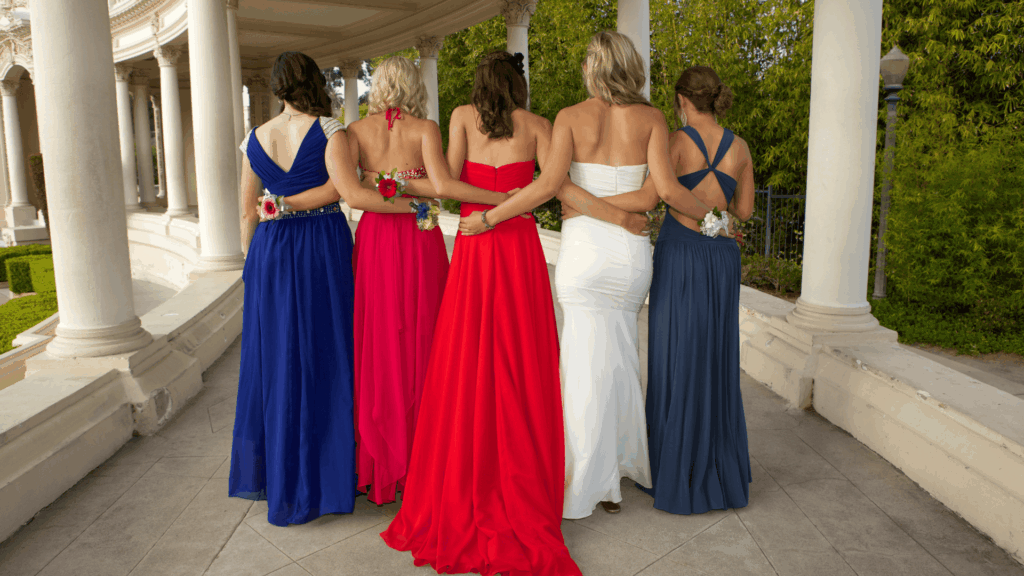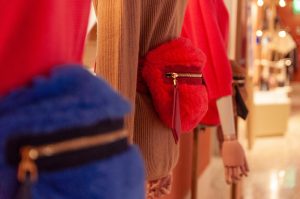Prom night often brings up one big question: Is it worth spending hundreds on a designer gown, or should a budget-friendly dress do the job just as well? The truth is that a budget option can look just as elegant as a designer dress if chosen with care. Style, fit, and confidence matter far more than the price tag.
Designer dresses promise unique styles and high-quality fabrics, but they also come with a cost that may not feel practical for a single night. On the other hand, affordable dresses now offer impressive designs that allow students to feel stylish without draining their wallets.
This article explores the trade-offs between luxury and affordability, while also sharing smart strategies to find a dress that feels special. Whether someone wants to splurge or save, the goal is to make prom memorable without regret.

Should You Splurge on a Designer Prom Dress or Save with a Budget Option
Weighing Designer Prom Dresses Against Budget Options
The choice between a high-end designer gown and a more affordable dress often comes down to price, quality, and personal priorities. Some students value brand names and craftsmanship, while others focus on style, comfort, and saving money for other expenses.
Style, Trends, and Personal Expression
Both designer and budget dresses cover a wide range of styles, from classic A-line cuts to bold mermaid silhouettes. Designer brands may release trend-setting collections first, but budget retailers quickly follow with similar versions.
Students who want the latest runway-inspired look without high costs can explore designer-inspired prom looks for less. These dresses often mirror popular designs while keeping prices accessible.
Personal expression plays a larger role than price. A well-chosen budget dress can feel just as special as a designer gown if it matches the wearer’s personality. Color, neckline, and embellishments often matter more than the label inside the dress.
Cost Comparison: Designer vs. Budget Prom Dresses
Designer prom dresses often range from several hundred to over a thousand dollars. These prices reflect brand reputation, exclusivity, and materials. In contrast, budget-friendly dresses usually cost between $100 and $300, with many options available under $150.
Families should also consider extra costs such as alterations, shoes, and accessories. A $600 gown may require another $100 in tailoring, while a $200 dress with minimal adjustments could save significant money.
Affordable retailers and online shops provide a wide range of styles at lower prices. Many students find that budget dresses allow more flexibility with accessories or hair and makeup since more money remains in the overall prom budget.
Quality, Fabric, and Craftsmanship Differences
Designer gowns often use finer fabrics such as silk, chiffon, or hand-beaded lace. The stitching tends to be more precise, and the fit usually feels more tailored. These details may create a polished look that stands out in photos.
Budget dresses, while less expensive, can still offer good quality. Many use polyester blends or synthetic fabrics that look elegant but cost less. Advances in mass production allow affordable dresses to mimic the look of luxury gowns without the same price tag.
The main difference lies in durability. A designer dress may last longer and hold up better after alterations, while a budget dress might be more delicate. However, since most students only wear the dress once, durability may not matter as much as overall appearance.
Brand Name vs. Value for Money
For some, a designer label provides confidence and status, making the higher price feel justified. The brand itself becomes part of the experience, especially for those who value exclusivity.
Others see more value in spending less on the dress and saving money for other parts of prom night, such as tickets, transportation, or photography. A budget dress frees up funds without sacrificing style.
Affordable collections found through options like prom dresses show that students can achieve a glamorous look without overspending. In this case, value comes from balancing cost, style, and practicality rather than focusing only on the brand name.
Smart Strategies for Choosing the Perfect Prom Dress
A perfect prom dress balances style, comfort, and cost. Students often face the choice between splurging on a designer gown or saving with a budget option, but careful planning can make either choice work well.
Setting a Realistic Budget for Prom Attire
A clear budget helps prevent overspending on prom attire. Students should consider all expenses, not just the dress, since costs often include tickets, dinner, hair, makeup, and transportation. Breaking down the total budget into categories makes it easier to see how much can go toward the dress itself.
For example, someone with $400 to spend might divide it as follows: $200 for the dress, $80 for shoes, $70 for hair and makeup, and $50 for accessories. This approach keeps spending balanced.
Writing the numbers down also helps avoid impulse buys. A budget should leave room for small adjustments, but it should not stretch so far that other prom night costs become stressful.
When to Splurge and When to Save
Not every part of prom attire needs a high price tag. Splurging makes sense if the dress has a unique design, high-quality fabric, or a flattering fit that cheaper options cannot match. A well-made gown may also need fewer alterations, which saves money in the long run.
On the other hand, saving works best for items that will not be used again. Shoes, clutches, and jewelry often fall into this category. Many affordable accessories look elegant and still complete the outfit.
Students should also think about future use. A timeless dress might work for other formal events, which makes a higher price more reasonable. A trend-heavy style may not be worth the same investment.
Alternative Options: Renting, Secondhand, and Sales
Renting a gown allows students to wear designer styles without paying full price. Rental services often include cleaning, which removes extra hassle. Borrowing from a sibling or friend also cuts costs while keeping choices stylish.
Secondhand shops and resale platforms provide another smart option. Many prom dresses are worn only once, so buyers often find pieces in excellent condition at much lower prices. Checking return policies and inspecting for wear is important before purchase.
Sales and clearance racks also offer strong value. Last season’s dresses often cost far less but still look fashionable. Shopping early in the year increases the chance of finding these deals before sizes sell out.
Factoring in Accessories and Comfortable Heels
Accessories can transform a simple gown into a standout look. Statement earrings, a clutch, or a belt can add personality without large expense. Borrowed or secondhand accessories work just as well as new ones.
Comfortable heels matter as much as style. Long hours of standing, dancing, and photos can make painful shoes a regret. Low block heels, wedges, or cushioned insoles provide support while still looking formal.
Shoes should be tested in advance to confirm comfort. A backup pair of flats in a small bag also helps students enjoy the night without sacrificing style or comfort.
Conclusion
A designer dress can deliver unique style and fine details, but the high price may not feel practical for a one-night event. A budget-friendly dress can still look elegant and leave room for accessories, shoes, and alterations.
The best choice depends on personal budget, comfort, and how much value the wearer places on brand names or long-term use.
Therefore, the decision comes down to balance: spend more if the dress will be worn again or holds special meaning, or save with a lower-cost option that still feels stylish and comfortable.

fashionabc is a fashion technology platform, comprising a digital directory and various other digital tools and supply chain solutions for the fashion industry ecosystem, that focus on ethical fashion and sustainability. We are building inclusive digital transformation tools for fashion professionals who are willing to take steps towards a more sustainable ethical fashion industry, by adopting AI and DLT blockchain technology.
* building digital profile and IP solutions for fashion businesses
* tackle issues such as provenance and counterfeit in supply chain
* contribute to the construction of a meritocratic ethical fashion industry which is certified and part of the circular economy











